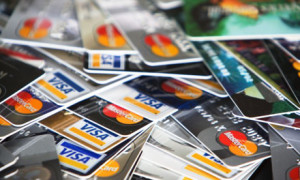Ron Klien, also known as the “Grandfather of Possibilities” is an exceptional entrepreneur, business consultant, mentor and inventor. “I solve situations by simplifying them”, says Klein. At 77, the Philadelphia native is the inventor of the magnetic strip found on nearly all of today’s credit cards. The “validity checking system” as his patent reads is a magnetic strip on the back of a plastic card that functions much like a cassette recorder. Rather than recording sounds the magnetic strip records characters that can be ‘played’ into a credit card swipe reader.
Early on, credit card merchants would receive large printed books listing negative accounts to determine the validity of a credit card. The process was extremely time consuming and often took longer to complete than writing a check for merchandise. Klein took a piece of magnetic tape and
stuck it on the back of a plastic card and the rest was history. The tape stored information found on the card and the credit card reader would read the information into an electronic device that would relay that credit card information to a merchant account that would determine the validity of the credit card. Klein took his magnetic strip idea to credit card manufacturers who decided the magnetic strip could easily be added to the cards. Not only did this speed up the process of checking credit card validity, it also paved the way for many fraud detection and credit card identification systems.
Other inventions credited to Ron Klein include Multiple Listing Services known as MLS listings and Trade Information System for bond quotes on the New York Stock Exchange.
The magnetic strip may have met it’s match however, today credit cards are being produced with tiny memory chips known as EMV for EuroPay, MasterCard Visa. Also known as Chip and PIN cards these cards are currently produced with a magnetic strip and the chip built into the card. New readers can access information on the chip while traditional credit card terminals with magnetic strip readers can access credit card information through the magnetic strip. As new laws will soon require the EMV chip, we may see the magnetic strip being phased out. Digital wallet technologies may see the credit card phased out entirely by using Near Field Communications chips to transfer credit card data wirelessly.
With the pace of technology over the past 5 or 6 decades it’s an outstanding feat to have an accomplishment of this size in your name. The magnetic strip has certainly been a lasting solution to real world problem. Whatever technology wins out next, it’s sure to be around for quite some time as standards for credit card processing tend to have staying power. Merchants aren’t fond of replacing credit card terminals and point of sale systems on a whim.
